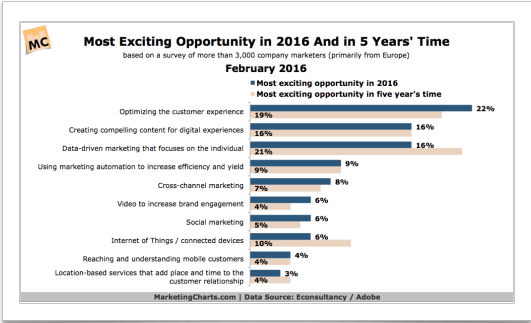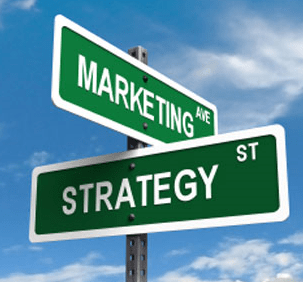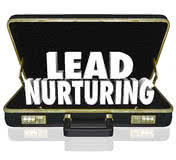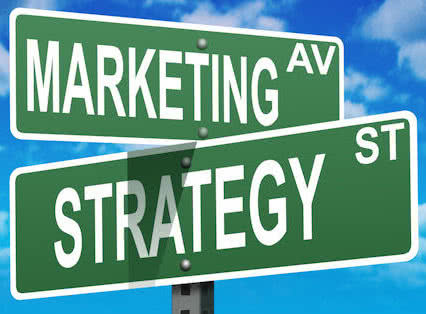The time of year every marketing executive anticipates with enthusiasm is here—budget planning season. Aging service providers continue to be challenged with dynamic economic and customer attributes, changing avenues of marketing to reach their leads, along with tougher competition, shrinking budgets and limited staff resources. With so many things to consider, what or how should you attack your marketing budget planning process for 2017?
I’m a firm believer in using data to drive the budgeting process and make my case to substantiate what I need to yield the results I’m expected to reach. Interestingly enough, I’m still surprised as I interact with senior living marketers across the country at industry conferences, that many are still either not engaged at or have limited engagement with some form of data driven inbound digital marketing. Yet those that are, speak of positive results.
However, I see a trend of marketers evaluating the need to use or implement CRMs (customer relationship management). They use CRMs for data driven sales management that integrates with sophisticated automated marketing platforms for lead generation and nurturing. Technology will continue to drive and change how marketers implement and manage strategies in 2017 and the years ahead. Let’s explore other data driven budget factors to help guide you in your planning process.
What’s the Budget Target?
The days of simply using the same budget target as you did the year before are gone. It’s important to collect historical data and evaluate it for trending patterns, paired with future trends so you can make sound decisions. If you’re new to your marketing role, you may not be confident on what you should target for an average budget. The Small Business Administration recommends the following:
● Start-ups should allocate between 3-5 percent of actual or projected gross revenue to marketing.
● Established organizations may want to set aside 2-3 percent.
● However, if your business has revenue of less than $5 million, the SBA recommends allocating 7-8 percent of your revenue to marketing (assuming you have margins of 10-12 percent). You also should divide this up between brand development costs (sales collateral, blogs, website) and promotion costs (advertising, events).
Note that the percentages mentioned above are to cover your complete marketing investment—including staff, agency partnerships, ad costs, media spend, outside suppliers, etc.
How Should I Allocate My Budget?
It would be ideal if you could make the sole decision on how to allocate your budget among the many marketing tactics available to you, however you may still be dealing with peers who are not quite on board with inbound digital marketing and want to drive your allocation to more traditional outbound forms of marketing. I love this quote by Guy Kawaski:
“If you have more money than brains, you should focus on Outbound Marketing. If you have more brains than money, you should focus on Inbound Marketing.”
● More than a third of CMOs say that digital marketing will account for 75% or more of their spending within the next five years.
● 69% of senior marketers are currently allocating their digital marketing funds to website content, development and performance optimization. 53% are spending part of their budget on social media community growth and engagement.
● 28% of marketers have reduced their advertising budget to fund more digital marketing.
● More than 40% of US marketing professionals said they increased spending on data-driven marketing in the first quarter of this year, compared with 38.4% who said the same in Q4 2013.
● On average, 60% of a marketer’s time is devoted to digital marketing activities, fueling demand for digital marketing skills.
● Surveyed Marketers allocate 23% of their overall marketing budgets to outbound marketing and 34% to Inbound Marketing tactics. (Gannett Local)
Listen to Your Audience
The days of focusing on what you want to push out to your customers is over—they can turn you off with a push of a button on any device today. The key is to understand your customer’s buyer journey and ensure you are developing a strategy that is laser focused on attracting and connecting with your buyer via their preferred channels with the type of content they are interested in. It’s important to understand how your buyers interact online such as the following:
● Online buyers go through about 57% of the buying cycle on their own without talking to sales. (Executive Board)
● 77% of online customers prefer permission-based promotions via email.
(ExactTarget)● Customers spend 50% of their time online engaging with custom content.
(HubSpot)● By 2017, video marketing will dominate nearly 70% of consumer website traffic.
(Cisco)Show Me the Trends to Plan for!
As you look to 2017, understanding what tactics are trending to reach, engage, and convert your visitors to leads can play a big part in additional monies you may need to include in your budget.
According to a research study by Econsultancy, marketers believe optimizing for the customer experience is one of the most “exciting” opportunities in 2016. The connectivity of users (increased mobile usage) combined with new marketing technologies (marketing automation and CRM) allows marketers to reach users in ways never before possible. The potential of data-driven marketing is expected to grow in the next five years, and could become another powerful strategy for reaching the right individuals at the right time in new, innovative ways.

Just over a fifth (22%) of client-side respondents ranked optimizing the customer experience as the single most exciting opportunity for the year ahead, slightly ahead of other areas such as creating compelling content for digital experiences and data-driven marketing (both 16%).
The priorities that sit atop marketers’ lists are tied together by their focus on the individual: personalization (31%), content optimization (29%) and social media engagement (25%) are overlapping capabilities with the customer at the center.
When asked to identify their strategic priorities for 2016, more organizations chose data-driven marketing with their top vote (53%) than any other.
The vast majority (94%) say that optimizing creative workflows will be important in delivering a great customer experience, while a similar proportion (91%) say the same about the importance of improving collaboration between creative and marketing teams.
Nearly half (46%) of respondents rank the process of creating a cross-team approach with the customer at the heart of all initiatives as 4 or 5 on the difficulty scale.
Just over half of company respondents (51%, compared to 61% of agencies) rank mobile as a top-three area of priority for their organization (or their clients) in 2016.
I’m confident that using the basic principle of delivering the right content in the right channel at the right time the way your persona (ideal customer) wants to receive it is the heart of identifying which trends to follow. Remember, not all trends pertain to all customers or industries. That’s why it’s so important to create and follow personas specific to your senior living organization.
Show Me The Savings!
I typically (but not always), do not see organizations receive larger budgets (that is, unless they can prove the ROI of the additional investment), therefore more organizations are seeking avenues to work more efficiently and use data to make better investment decisions. Implementing technology (CRM’s and automated marketing platforms) aligned with an inbound marketing strategy results in substantial savings as demonstrated in the following research:
● Mid-sized businesses save 31% on Inbound Marketing costs compared to paid search.
(Eloqua)● Inbound leads cost 61% less on average than outbound leads.
(HubSpot)● Content marketing generates 3 times as many leads as traditional outbound marketing, but costs 62% less.
(CMO)● The average cost per lead drops 80% after 5 months of consistent Inbound Marketing.
(Eloqua)● Brands relying on inbound marketing save over $14 dollars for every new customer acquired.
(Hubspot)Whether you’re implementing technology or an inbound marketing program, realize you will need to plan for initial one time setup fees in your budget for the first year. In addition, inbound marketing is a slow growth strategy. It takes time to build equity with the search engines and attract your quality visitors, thus you may not realize full savings or results until year two.
Show Me the Leads & ROI!
Of course most CEOs and CFOs not only want to see the cost savings, but also the actual ROI (return on investment) for their investment in technology or an inbound marketing program. It’s important to establish realistic expectations around the ROI for the first year, especially if you have no baseline data to begin with. However there is data in abundance to support the consistent positive outcomes associated with an inbound marketing program when it is properly established and managed.
● Inbound Marketing yields 3 times more leads per dollar than traditional methods.
(Kapost)● Properly executed Inbound Marketing tactics are 10 times more effective for lead conversion compared to outbound methods.
(Gartner)● Inbound Marketing can result in doubling the average website conversion rate from 6% to 12%.
(HubSpot)● Companies that automate their lead nurturing cycle see a 10+% increase in revenue within 6 to 9 months.
(Gartner)● On average, brands that publish 15 blog posts per month convert 1,200 new leads per month.
(HubSpot)● 44% of brands that use marketing automation software see ROI within 6 months, while 75% see ROI after one year. (Groove Digital Marketing)
● Conversion rates are nearly 6x higher for content marketing adopters than non-adopters (2.9% vs 0.5%).
(Aberdeen)Final Tips
Even senior living providers with limited budgets are generating results with custom designed inbound marketing programs. I’m confident of that because our clients consistently see positive results as proven by data. Using a combination of your own data and industry trends can help you formulate a 2017 marketing budget that will generate higher visitor to lead to sale conversions. Technology is only going to continue to significantly influence how consumers search and make decisions. Search engines will continue to make changes based upon how consumers use the search engines. As you plan your budget, contemplate that both of these factors will drive a dynamically changing inbound marketing strategy and your budget! For more helpful budget planning tools and resources, access your
2017 Budget Planning Tool Kit!
About the Author
As founder of
Marketing Essentials, Patty’s continual quest and drive for helping organizations grow and meet their goals is her passion. With over 30 years of strategic healthcare and aging service marketing, sales, management and leadership experience, she is known as a catalyst and understands the challenges CEOs and marketing leaders face in executing inbound digital marketing & sales strategies that yield results. No surprise you will find her feeding her hunger for lifelong learning with a good book and latte!






